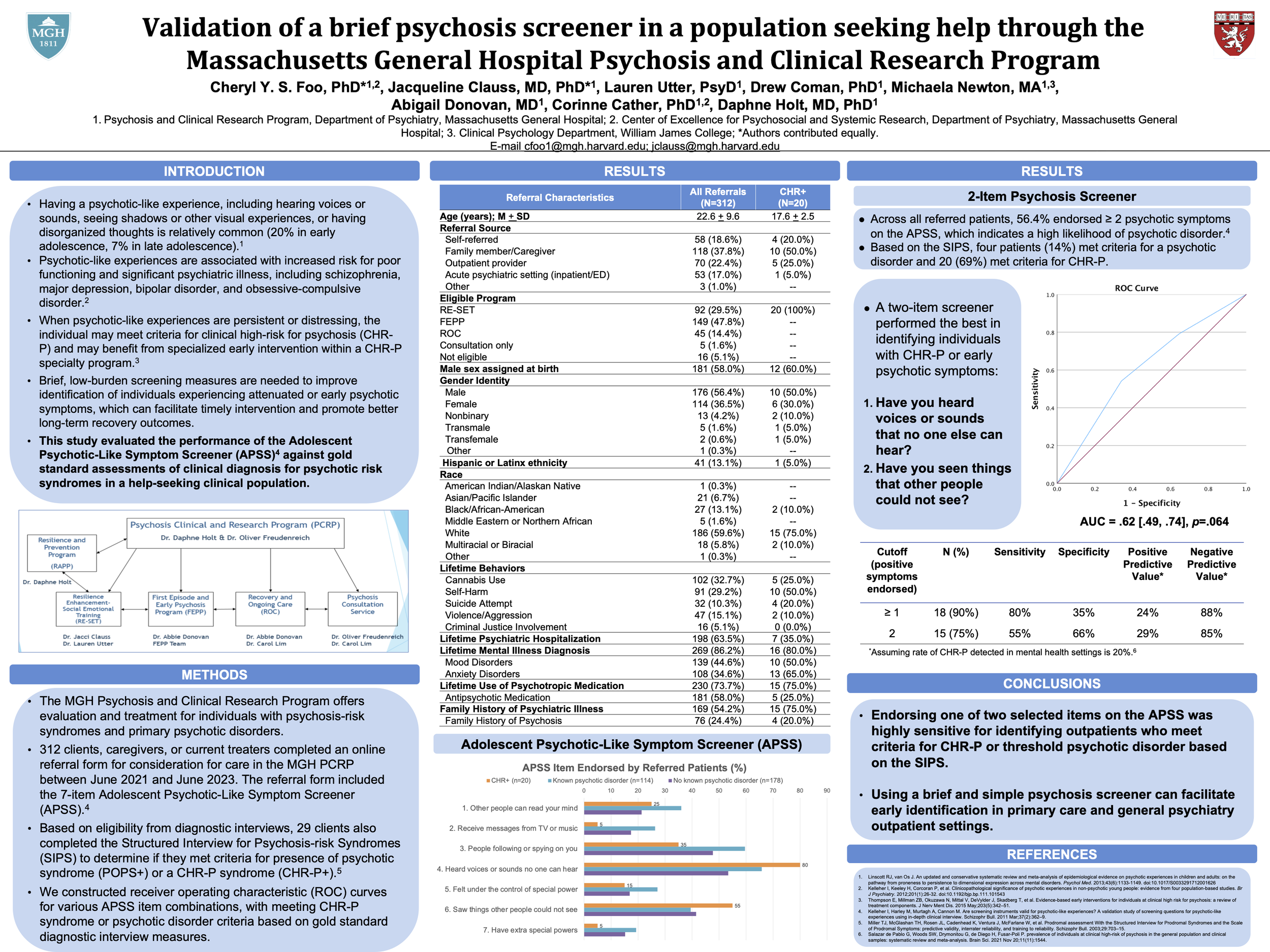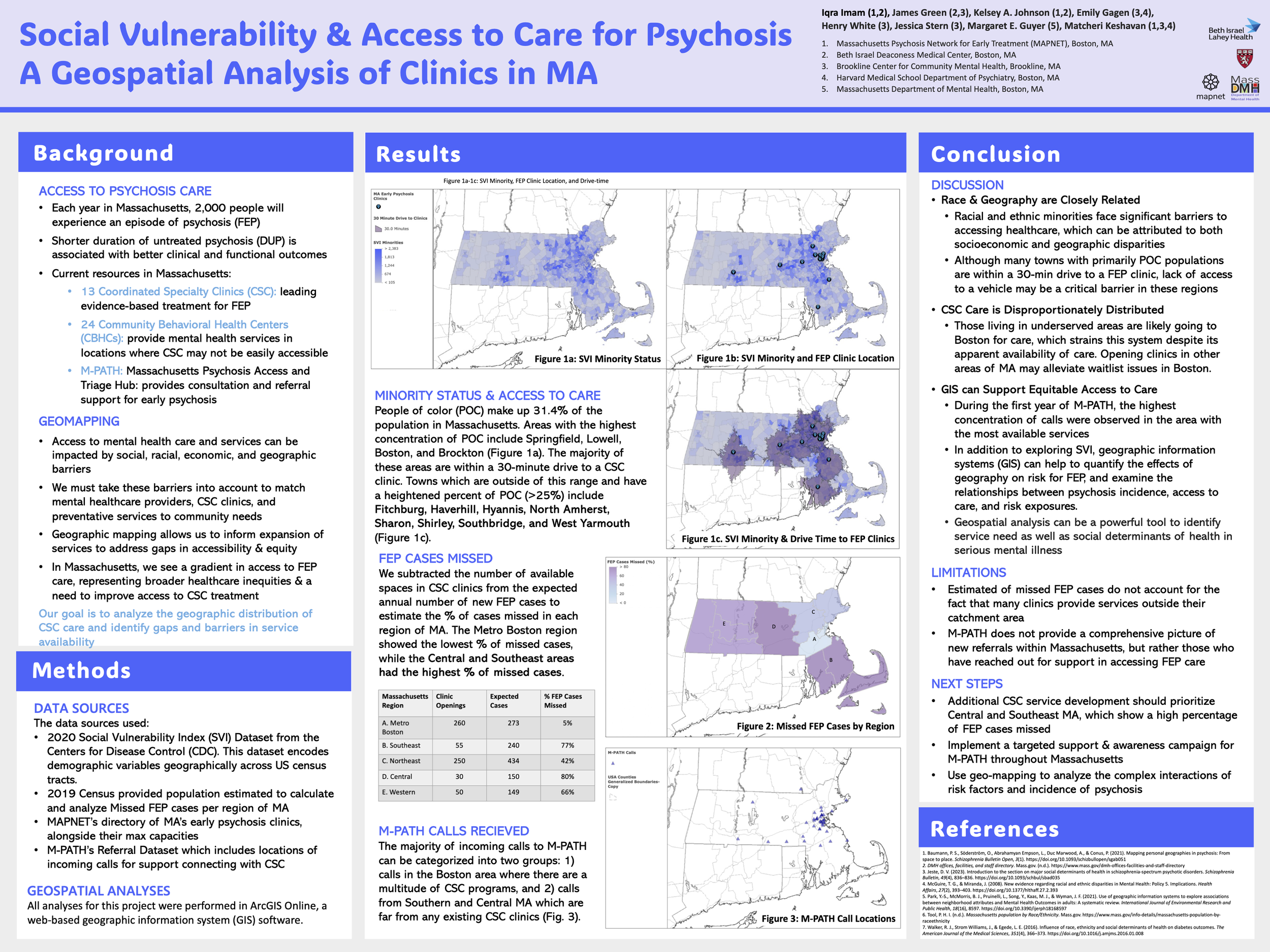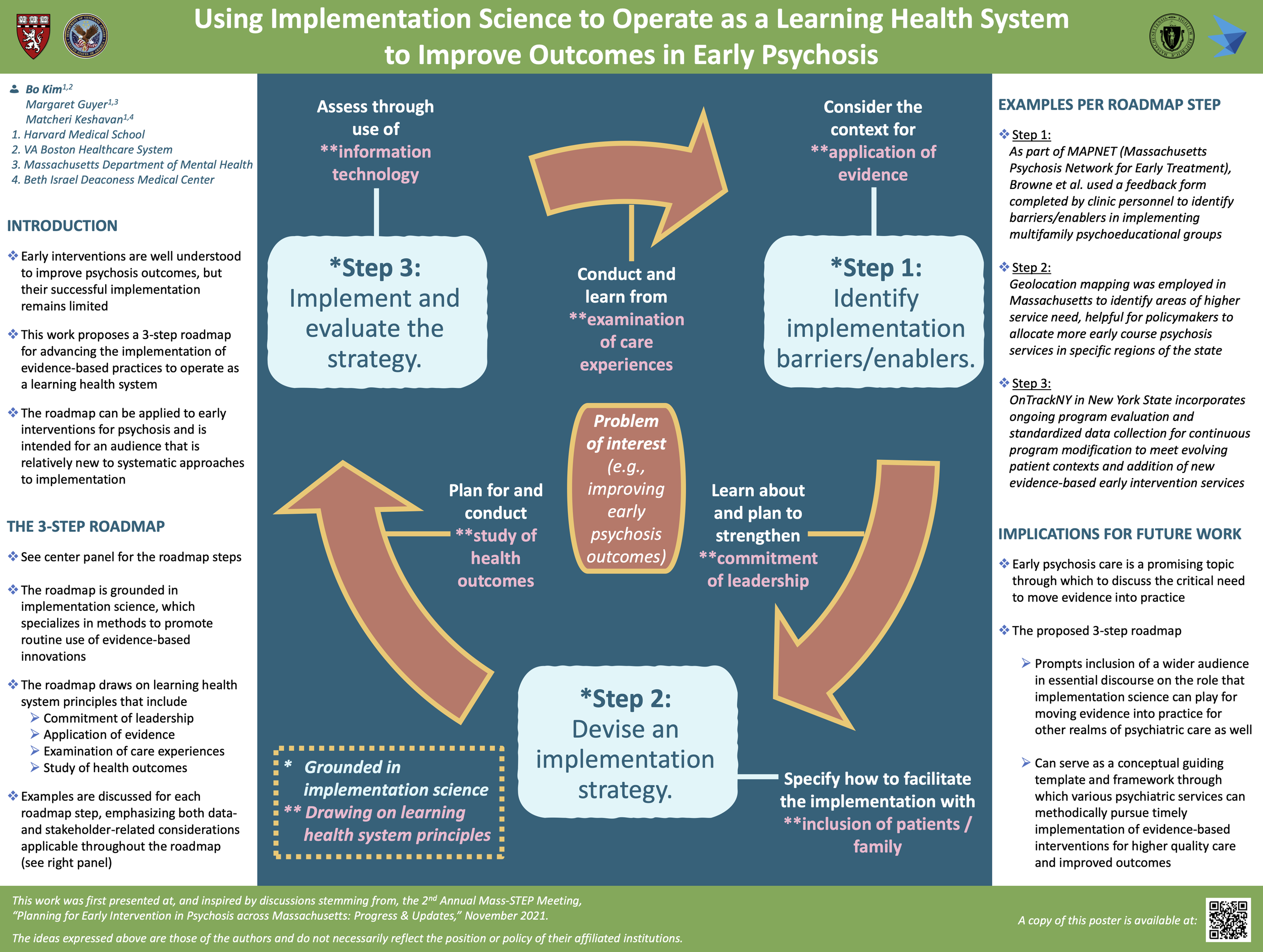Sleep Spindle Density as it relates to Positive Symptoms in Early Course Psychosis
Sleep Spindle Density as it relates to Positive Symptoms in Early Course Psychosis
Nataly Kaldawy (1), James Green (1), Nicolas Raymond (1), Finn Janak (1), Victor Zeng (1), Bengi Baran (2,4), Dan Denis (3), Robert Stickgold (1), Dara Manoach (4), Matcheri Keshavan (1)
1. Department of Psychiatry, Beth Israel Deaconess Medical Center, Boston, MA
2. Department of Psychological and Brain Sciences, University of Iowa
3. Department of Psychology, University of York, England
4. Sleep, Cognition, and Neuropsychiatry (SCAN) Lab, MGH
Abstract
Background: Schizophrenia and related psychoses are associated with deficits in sleep spindles during stage 2 non-REM sleep. How these sleep spindles relate to positive and negative symptoms of psychosis, however, is not well known. This study aims to understand the relationship between symptom severity of psychosis and sleep spindle density.
Methods: Data from 67 participants on the SPARCS sleep study was used, and participants were separated into EC (schizophrenia and related psychosis), FH (family high risk), and HC (healthy control) groups. Symptom severity of psychosis was measured using the PANSS and sleep spindle density was measured in spindles per minute using an EEG. We used a one-way ANOVA to assess the difference in sleep spindle densities between the three groups and multiple regression analyses to assess the difference between sleep spindle density and severity of psychosis.
Results: The EC group had significantly lower sleep spindle density than the FH and HC groups (F (2) = 4.71, p < 0.05). Multiple regression analyses demonstrated that PANSS Positive Symptoms (b = -0.08, p <0.05) and P6 (Suspiciousness/Persecution) (b = -0.29, p <0.05) were significantly predicted by sleep spindle density while adjusting for age and gender. PANSS Negative and General symptoms showed no correlation with spindle density.
Conclusion: These results show promise in conducting similar studies to further understand sleep spindles as a potential biomarker for schizophrenia. They also encourage further studies using structural and functional imaging to investigate the thalamus’ role in connecting sleep spindles to psychosis symptoms. Additionally, given the role of sleep spindles in memory consolidation, the relation between cognition, spindles, and psychotic symptoms needs to be further investigated. This research may improve the identification of early psychosis biomarkers, which may enhance accuracy of diagnosis and treatment, improving access and equity to effective early psychosis care.
Supported by NIMH grant MH MH107579






























